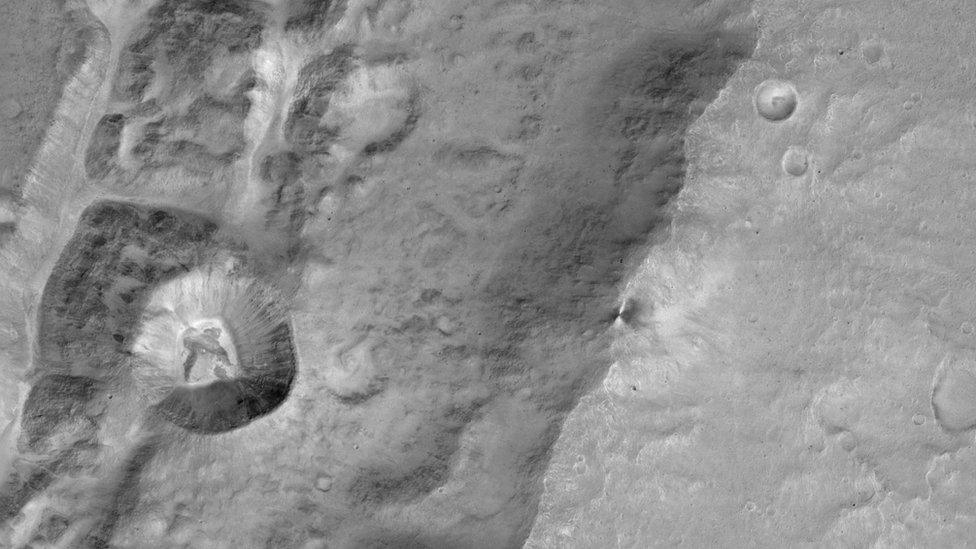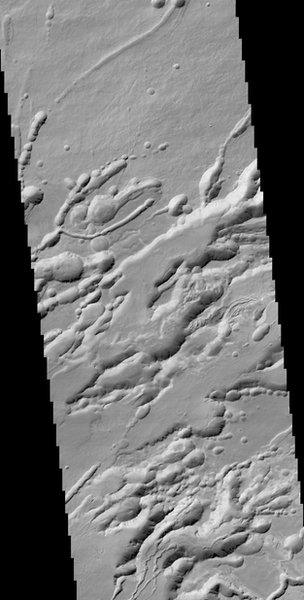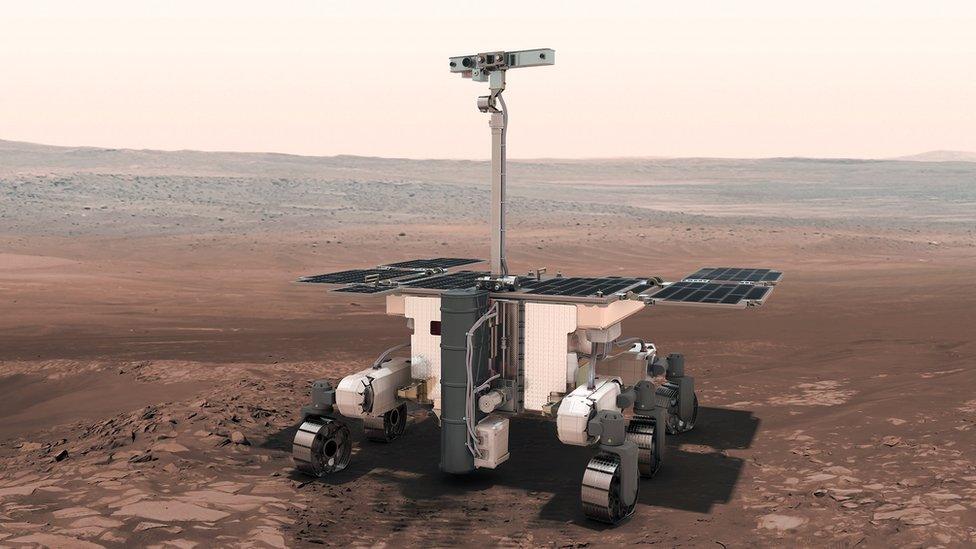Mars probe returns first pictures
- Published

Europe's and Russia's new satellite at Mars has sent back its first images of the planet.
The Trace Gas Orbiter (TGO), external arrived on 19 October, putting itself in a highly elliptical parking orbit.
This must be circularised over the coming year before the mission can begin full science operations.
But scientists have taken the opportunity of some close passes to the planet in recent days to check out the TGO's instrumentation.

A structure called Arsia Chasmata on the flanks of one of the large volcanoes, Arsia Mons. The width of the image is around 25 km
There is delight at the quality of the pictures returned from camera system, CaSSIS (the Colour and Stereo Surface Imaging System, external).
TGO passed over a region called Hebes Chasma at its closest approach, just 250km from the Martian terrain.
"We saw Hebes Chasma at 2.8 metres per pixel," said Nicolas Thomas, the camera's principal investigator from the University of Bern, Switzerland.
"That's a bit like flying over Bern at 15,000km/h and simultaneously getting sharp pictures of cars in Zurich."
TGO sensors NOMAD, external and ACS, external also came through their early tests successfully.
These are the sensors that will make a detailed inventory of Mars' atmospheric gases.
In particular, they will go after the components that constitute less than 1% of the planet's air - chemical species such as methane, water vapour, nitrogen dioxide, and sulphur dioxide.
Methane is the main focus. From previous measurements, its concentration is seen to be low and sporadic in nature. But the mere fact that it is detected at all is really fascinating.
The simple organic molecule should be destroyed easily in the harsh Martian environment, so its persistence - and the occasional spikes in its signal - indicate a replenishing source of the gas.
The speculation is that it could be coming from microbial life somewhere on the planet.
It will be CaSSIS's job to look for possible geological forms on the surface that might tie into methane sources. A fourth instrument, FREND, external (successfully tested in recent days, too), will sense hydrogen in the near-surface. This data can be used as a proxy for the presence of water or hydrated minerals.
This again is information that could yield answers to the methane question.
TGO was the unspoken success on the day Esa's Schiaparelli lander crashed into Mars.
The surface probe had been dropped off at the Red Planet by TGO and was making its ill-fated descent just as the satellite took up its parking orbit.
The successful insertion almost went unnoticed in the fuss over Schiaparelli.
TGO is the first phase in a joint venture at Mars that Europe is undertaking with Russia, external.
The second step in this project known as ExoMars is to put a robot rover on the planet in 2021.
It needs a large injection of cash on the European side to go forward, however - just over €400m.
Research ministers from Esa member states are meeting this week in Lucerne, Switzerland, external, to try to resolve this budget problem.
Seeing TGO perform so well should at the very least give the politicians a warm feeling as they push through their difficult discussions.

The first CaSSIS stereo reconstruction of a small area in Noctis Labyrinthus. The image gives an altitude map of the region with a resolution of less than 20 metres
Jonathan.Amos-INTERNET@bbc.co.uk, external and follow me on Twitter: @BBCAmos, external
- Published25 November 2016
